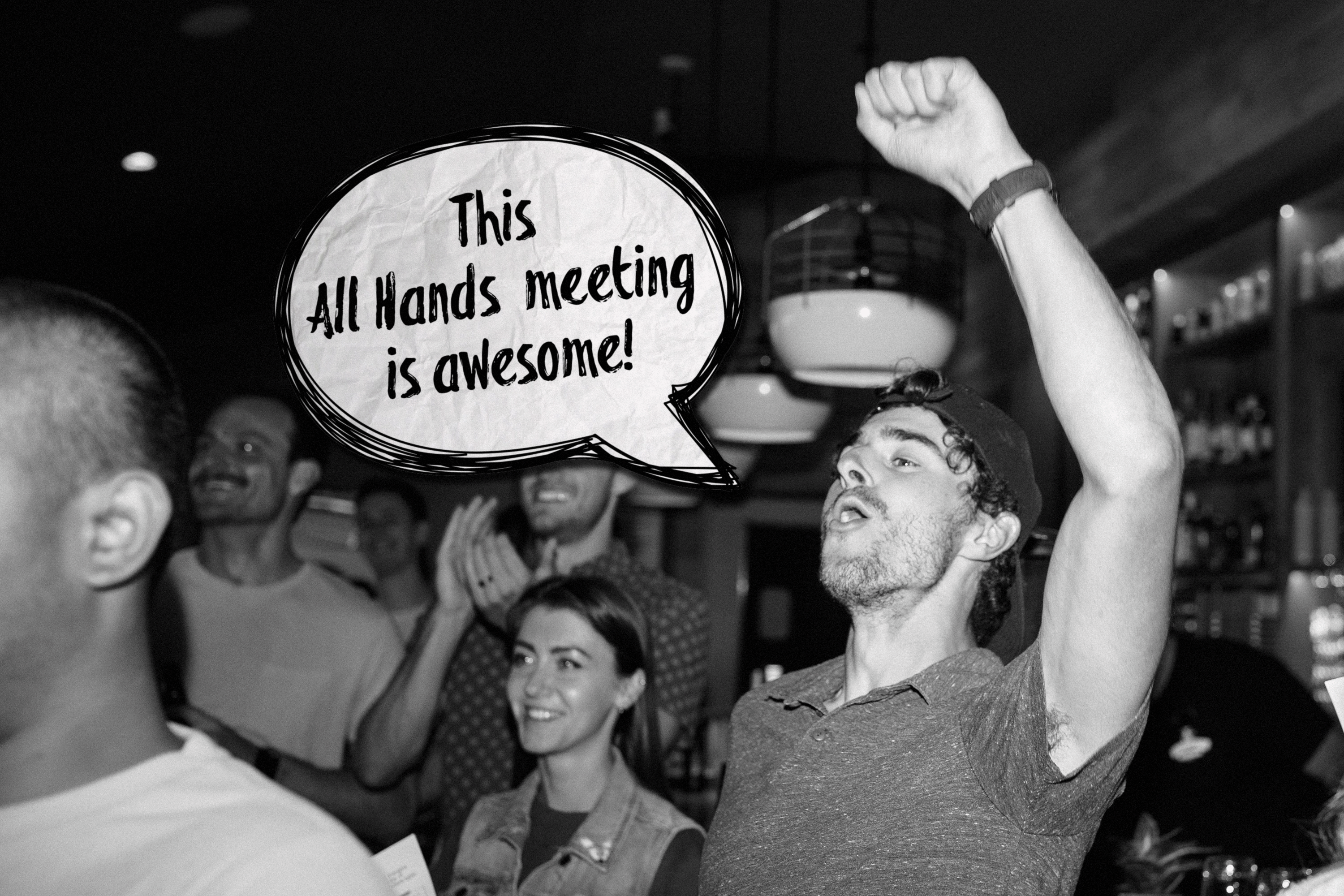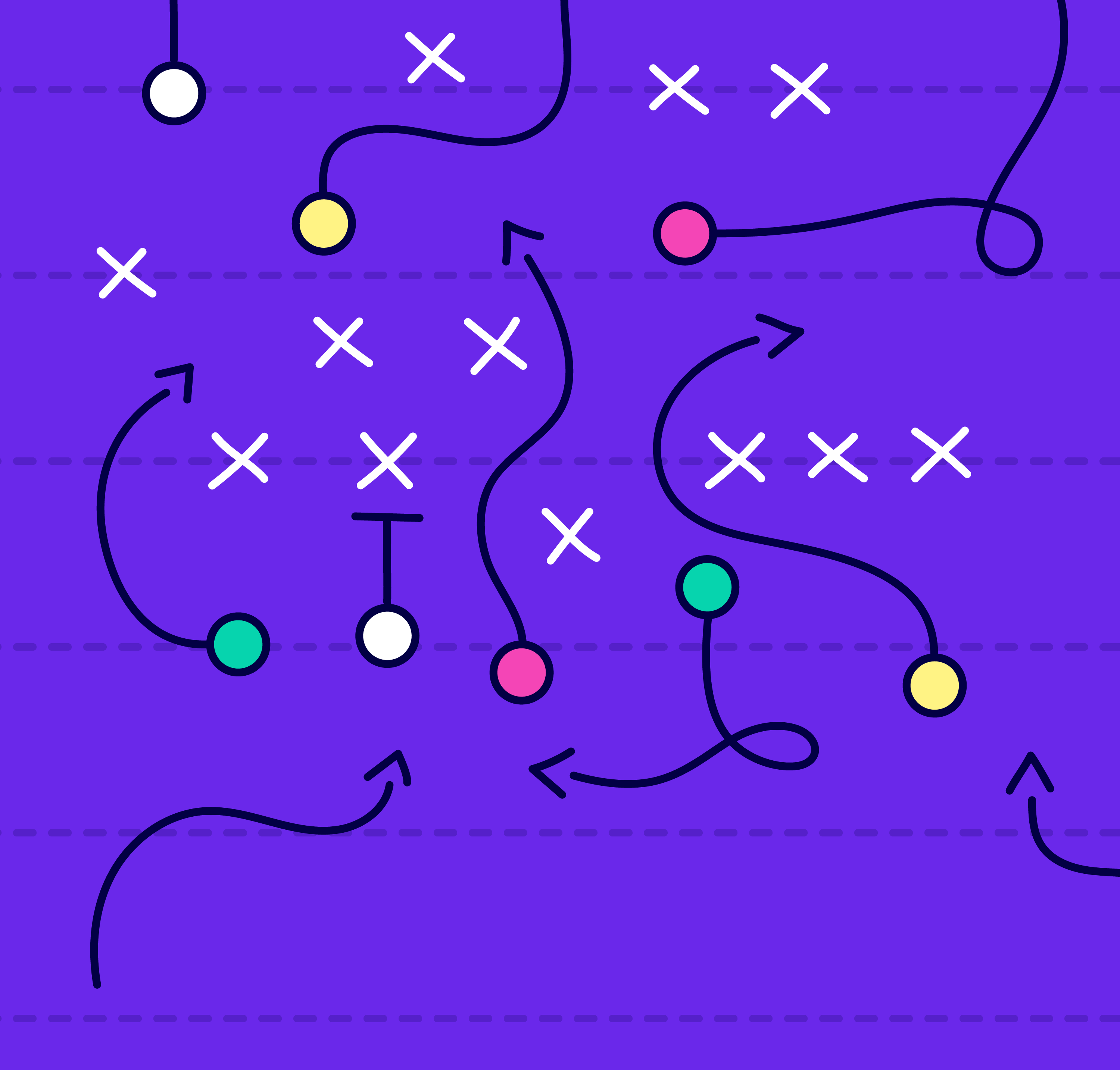
Articles
How to Build an All-Purpose All-Hands Meeting Agenda
August 2, 2022

“This could’ve been an email.”
If you’ve taken the time to plan and conduct a meeting, hearing that phrase might feel like a punch in the gut. But is it true? Could your meeting have been more productive than a one-and-done message?
Meetings aren’t just a way to talk with your team; they’re a way to have open discussions with direct feedback. And the don’t have to be soul-sucking — they can be a positive experience for everyone if done right.
One of the biggest complaints employees have about meetings is that they’re usually unproductive. Having a meeting agenda might be what you need to make them worth everyone’s time.
What’s a meeting agenda, and why is it useful?
A meeting agenda is basically an outline of an upcoming meeting.
Through the agenda, you can plan the purpose of the meeting, topics you want to cover, who’ll lead discussions, how long each topic will take, and the desired outcome of the meeting.
An agenda can make sure that your meeting is on-topic, time-efficient, and, most of all, meaningful.
You can also figure out beforehand what obstacles you might face and problem-solve ahead of time. That can help you refocus participants’ attention when the meeting runs off on a tangent.
How to create a great meeting agenda
If you’ve endured a horrible meeting before, the meeting agenda was probably poor or nonexistent.
Meeting agendas are an added responsibility, but they’re well worth the effort.
Managers who make agenda-setting part of their business playbook instill confidence in their team. (Need some help drafting one? Check out one of these templates.)
Step 1: Figure out the topics you want to address with your team.
The first step is deciding what’ll be covered in the meeting, and this starts with figuring out why you’re conducting one in the first place.
The meeting objective should be clearly outlined at the beginning of the agenda. If it isn’t, your team won’t know what they’re walking into and you’ll waste precious time.

Are you looking to inform your team about a new policy? Do you need to brainstorm ideas for a new campaign? Do you have to make a key decision regarding the organization of your department?
Once you have your purpose, it’s time to figure out what topics you’ll cover.
Your topics should be relevant to the purpose of the meeting, and each must add something to the conversation.
For example, suppose you need to update your marketing strategy. You’ll want to put aside time for things like performance metrics of the current strategy, content feedback, a presentation on the updated marketing strategy, and an open forum on how to improve it.
Remember, you want your team to engage with the content, and that starts with making every topic pertinent.
Step 2: Delegate topics and tasks to appropriate team members.
This is a meeting, not a lecture — you shouldn’t be the only one speaking the whole time.
A great way to promote engagement is to delegate topics to subject owners among the team. Those team members should be tagged in the agenda, so they know what they’ll be speaking on ahead of time.
You can also use the agenda to delegate tasks to team members. As you go through the meeting, have a section dedicated to creating action items based on the topics discussed.
Those who have the appropriate knowledge base or strengths related to the task are assigned to work on it. Action items should also have a reasonable due date.
Your team members should be involved in creating the meeting agenda as well. Add a notes section so others can add suggestions or their own talking points. Making agenda-setting a collaborative experience promotes engagement with the material and encourages everyone to fully participate.
Step 3: Decide how much time each task or topic will need.
When creating the meeting agenda, you should also cover how much time you expect each item to take. Estimate a range of time that each topic will take, and share that estimated time next to each line item.
Be mindful of other people's time by planning for meeting run-over and being realistic about the amount of time you schedule. You never want a meeting to directly impact other scheduled commitments and responsibilities.
It’s important to be flexible, as you can never truly gauge how long items will take until the meeting is underway.
If something is taking longer than expected, negotiate with the team on what to prioritize with the rest of the time allotted and what can be saved for another meeting.
Step 4: Outline actionable steps.
There should be a set of objectives and key results (OKRs) that you’re trying to achieve during the meeting.
Remember, every meeting needs a purpose, and a smart facilitator will lead their team to the outcome they desire. Once action items are delegated, team members should be encouraged to pursue them.
In the end, review what each team member is responsible for after the meeting.
Coordinate follow-ups and check-ins with each other to help set benchmarks. It should be clear what everyone’s responsibilities are before the meeting ends.
Setting clear expectations in the meeting agenda will help you later on. Just as team members should be prepared before the meeting, they should be ready to follow up on what was discussed.
Step 5: Create a plan for follow-up.
Meetings happen on a consistent basis, so plan accordingly.
Create a plan ahead of time, setting aside time for a second meeting to cover what you weren’t able to do or to follow up on action items. You may want to schedule the next meeting around when action items are due.
This is especially important for onboarding meetings.
You should always pre-schedule meetings for new hires with a clear agenda. This can help prepare them for the discussion and gives them time to reach out with any questions they might need to clear up.
You may want to send a follow-up email after the meeting that includes the meeting agenda, meeting notes, a summary of key decisions made, and when the next meeting will take place.
This ensures everyone is on the same page moving forward and avoids the dreaded, “Wait, what was I supposed to do again?”.
Add what's important to your business playbook
So you’ve had a successful meeting — congrats! Now what? It’s time to document what you discussed in your meeting so that it can be referenced later.
Make the knowledge that was shared at your meeting available to everyone. This’ll help the entire team produce quality results.
.gif)
Knowledge sharing is extremely important when it comes to creating a cohesive workplace. Making the information from meetings available to the company as a whole is a great way to keep everyone on the same page.
After the meeting, organize information and action items so that they’re accessible to your team.
Any discussions that produced valuable insights might provide good items to include in your knowledge base!
Make your meetings a positive experience
Planning your meetings ahead of time saves you and your team a lot of hassle. When you work to change what meetings mean to your business you may even find that your team enjoys them (gasp!).
Effective meetings promote trust and show that you’re a hands-on, responsive leader. They’re also collaboration zones that offer a space to communicate.
These are also characteristics of a high-performance team, so it’s good to facilitate them.
Make everyone’s job easier by giving them access to the tools that’ll help them succeed. Add your meeting points and action items to your business playbook, and always strive to improve your systems.
Similar Blog Posts










